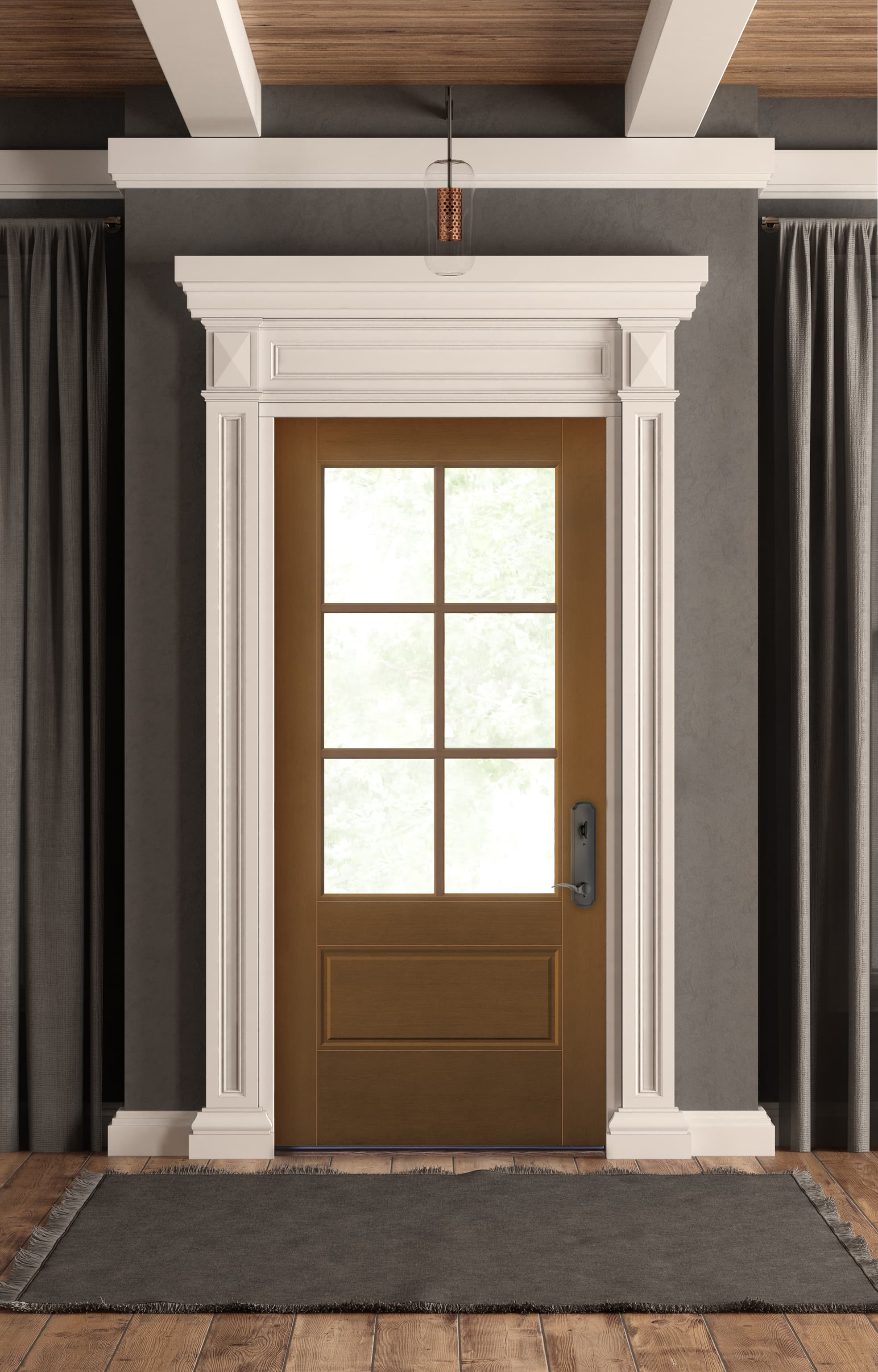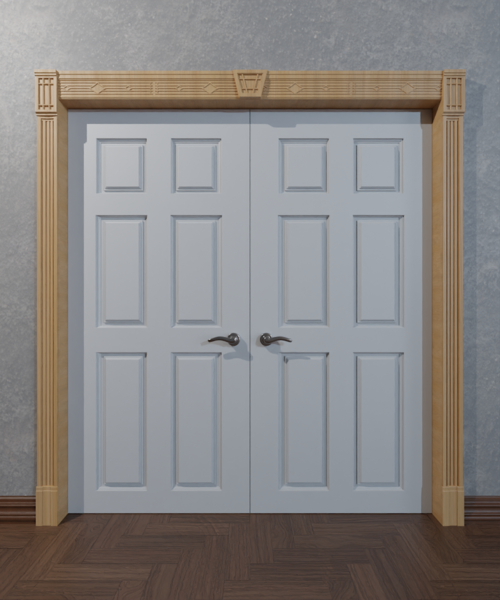Welcome to an inspiring journey into the realm of decorative door casing! If you’re looking to elevate your home’s aesthetic appeal, you’ve landed in the right spot. As someone who has navigated the world of home decor, I know firsthand how the right door casing can transform your space. Let’s dive into everything you need to know!
What is Decorative Door Casing?
Decorative door casing, also known as door trim or casing, is the architectural element that surrounds the door frame. It serves both a functional and aesthetic purpose by providing a finished look while also hiding the gap between the wall and door frame. The right casing can accentuate the style of your home, whether it’s modern, traditional, or anything in between.
Types of Decorative Door Casing
Choosing the right decorative door casing is essential for achieving the desired look. Here are some popular types to consider:
1. Traditional Casing
Traditional casings often feature intricate designs and profiles, enhancing classic homes.
2. Modern Casing
Modern casings are characterized by clean lines and minimalistic design, perfect for contemporary spaces.
3. Colonial Casing
Colonial casings often exhibit a robust profile with layers, reflecting historical architecture.
4. Rustic Casing
Rustic styles embrace natural wood finishes and rough textures, ideal for cozy, cabin-like aesthetics.
5. Custom Casing
If you have specific design preferences, custom casing can be crafted to meet your exact specifications.
Materials Used in Decorative Door Casing
The material you choose for your decorative door casing will significantly influence the final appearance and durability. Here are some common materials:
Wood
Wood is a classic choice that adds warmth and character. Popular options include oak, pine, and maple.
MDF (Medium Density Fiberboard)
MDF is an affordable and versatile alternative to wood. It can be easily painted and molded into various shapes.
Polyurethane
This lightweight, durable material can mimic wood but is resistant to moisture and decay.
PVC (Polyvinyl Chloride)
PVC is another water-resistant material, making it ideal for areas with high humidity.
Metal
Metal casings can provide a modern touch and are often used in industrial designs.

Benefits of Decorative Door Casing
Adding decorative door casing offers numerous advantages beyond visual appeal:
- Enhanced Aesthetics: Creates a polished look that complements your home’s style.
- Increased Home Value: Well-designed casings can boost your property’s resale value.
- Damage Protection: Protects the door frame from wear and tear.
- Improved Insulation: Helps reduce drafts by sealing gaps around the door.
How to Choose the Right Decorative Door Casing
Selecting the perfect casing for your doors involves several considerations:
1. Style Matching
Ensure that the casing complements the overall style of your home. Consider historical details and existing decor elements.

2. Material Considerations
Think about durability, ease of installation, and maintenance when choosing a material.
3. Size and Proportion
The size of the casing should be proportionate to the door and the room. Larger rooms may benefit from wider trim, while smaller areas may require more delicate profiles.

4. Budget
Set a budget that considers both the material costs and installation expenses.
Installation of Decorative Door Casing
Installing decorative door casing can be a rewarding DIY project. Here’s how to do it:
Tools You’ll Need
- Measuring tape
- Miter saw
- Nail gun or hammer
- Wood glue
- Caulk and caulking gun
- Paint or stain (optional)
Step-by-Step Installation Guide
- Measure the Door Frame: Take precise measurements of your door frame, accounting for any unique angles.
- Cut the Casing: Use a miter saw to cut your casing at 45-degree angles for clean joints.
- Test Fit: Before securing, place the pieces around the door to ensure a proper fit.
- Secure the Casing: Attach each piece with nails and wood glue for extra security.
- Fill Gaps: Use caulk to fill any gaps and create a seamless look.
- Finish: Paint or stain your casing to match your aesthetic.
Maintenance Tips for Decorative Door Casing
To keep your door casing looking its best, consider these maintenance tips:
Regular Cleaning
Dust and wipe your casing regularly with a damp cloth to prevent dirt buildup.
Check for Damage
Inspect for cracks or peeling paint and address issues quickly to prolong the life of your casing.
Repainting or Resurfacing
Depending on the material, repainting or refinishing may be necessary every few years to maintain a fresh look.
Comparison of Decorative Door Casing Materials
| Material | Durability | Cost | Maintenance | Best For |
|---|---|---|---|---|
| Wood | High | Medium to High | Requires upkeep | Traditional homes |
| MDF | Medium | Low to Medium | Easy to maintain | Budget-friendly projects |
| Polyurethane | High | Medium | Minimal maintenance | Moisture-prone areas |
| PVC | High | Medium | Very low maintenance | Bathrooms and kitchens |
| Metal | Very High | Medium to High | Easy to clean | Modern and industrial styles |
Pros and Cons of Decorative Door Casing
Pros
- Enhances visual appeal of doors
- Protects door frames from damage
- Offers insulation and reduces drafts
- Variety of styles and materials to choose from
Cons
- Can be costly depending on material
- Installation can be challenging for DIYers
- Requires regular maintenance for some materials
Frequently Asked Questions (FAQs)
1. What is the average cost of decorative door casing?
The cost can vary widely based on material and complexity but generally ranges from $5 to $15 per linear foot.
2. Can I install decorative door casing myself?
Yes, if you have the right tools and follow a guide, DIY installation is feasible. However, professional help may be beneficial for complex projects.
3. How do I clean wooden door casing?
Use a soft cloth with mild soap and water. Avoid harsh chemicals that could damage the finish.
4. Is MDF casing durable?
MDF is reasonably durable but not as long-lasting as solid wood or polyurethane. It’s best suited for indoor applications.
5. Can I paint decorative door casing?
Absolutely! Most casings can be painted or stained to match your interior decor.